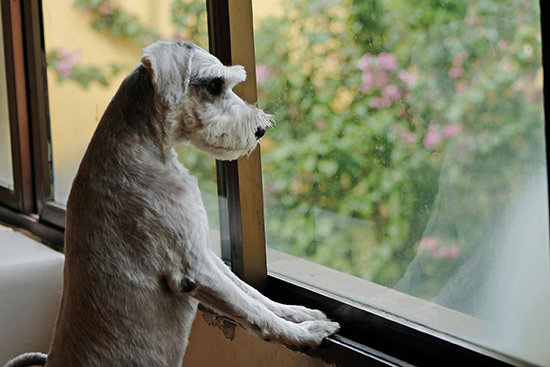(Family Features) For more than a year, working from home and keeping social circles small due to COVID-19 has meant people have been able to spend more time with their pets. However, as more Americans are vaccinated and restrictions loosen across the country, it’s likely many are spending less time at home with their pets. As a result, pet parents should be prepared to spot the signs of separation anxiety and help their pets manage.
When left at home alone, pets can exhibit behaviors that could indicate they’re experiencing separation anxiety. It’s not a new problem, but it can become more pronounced as pet parents begin to spend less time at home, whether they’re returning to work full-time or just leaving the house more often. It may be especially challenging for pets that found their forever homes during the pandemic, as being alone may be a stark contrast to what they’ve become accustomed to. In these cases, pets may struggle to learn how to cope with being by themselves.
To help pet parents identify separation anxiety in their pets and embrace alone time, consider these tips from Dr. Crista Coppola, PetSmart’s consulting animal behaviorist and separation anxiety expert.

How to Identify Separation Anxiety
Changes in behavior are some of the most common indicators of separation anxiety. These behaviors are coping mechanisms and can include excessive barking or whining, destruction near exit points or windows, having accidents around the house, hyper salivating, pacing, decreased appetite and depression. To better understand what your pet is experiencing, consider setting up a video camera when you leave to see how he or she behaves when you’re not there.
Ways to Prepare Your Pet for Separation
Unpredictability has been shown to add stress for many animals, including dogs, Coppola said. Routines, however, can help many pets cope with stressful situations. Because a vacation or long weekend getaway involves a change in your pet’s routine, these seemingly small changes can make him or her susceptible to separation anxiety. If you know change is coming, slowly introduce your pet to the idea of being alone beforehand to help your four-legged friend prepare. Start by taking short trips outside your home without your pet – even if just for a few minutes – and consider leaving treats or toys to help make the alone time more enjoyable.
When you are ready to leave the house, set up a cozy, inviting space for your pet, where he or she can’t destroy items or get hurt trying to escape. Consider a non-carpeted area in case of accidents or install a doggie door to allow for going outside when necessary. Prior to any period of alone time, mentally and physically engaging your pet by going for a walk or run, or working on quick trick training, can make it more likely he or she spends at least some of the time you’re gone resting.
While you’re gone, Coppola recommends providing your pets with enrichment activities such as puzzles, chews and calming aids like the Adaptil Calm On-the-Go Dog Collar. Calming vests like the veterinarian-recommended Thundershirt can also help pets transition.
Solutions for Coping with Anxiety
If your pet is excessively barking or exhibiting destructive behaviors, never punish him or her and avoid expressing disappointment or frustration, Coppola said. It is understandable to feel this way, but it can upset your pet further and add to the stress he or she may already be feeling. Instead, spend time having fun together when you are home and consider an option like PetSmart’s Doggie Day Camp, which can help ease the transition by gradually introducing your pet to the amount of time left alone. Available at more than 200 locations in full- or half-day sessions – including themed playdates – your furry friend will receive expert care, exercise, mentally stimulating playtime and socialization with other pups.
Learn more and find additional solutions to help deal with separation anxiety at petsmart.com/newnormal.
Photos courtesy of Getty Images







